 |
Picks is a monthly sampling of Japan's art scene, offering commentary by a variety of reviewers about exhibitions at museums and galleries in recent weeks, with an emphasis on contemporary art by young artists.
Note: Most of Japan's museums and galleries have reopened, but conditions and anti-coronavirus precautions vary. If you are planning a visit, please check the venue's website beforehand. |
 |
 |
|
|
 |
 |
| Nissan Art Award 2020 |
| 1 August - 22 September 2020 |
Nissan Pavilion
(Kanagawa) |
 |
| Nissan began bestowing its biennial art award in 2013. In an exhibition of this year's finalists, a standout was the monochrome work of Sachiko Kazama, whose straightforward graphic style critiques superficial splendor, yet is itself nothing if not splendid. Dyslympics 2680 is a pithy indictment of Olympian overkill, while PAVILION-Fart of the Earth and PAVILION-Monju Museum are sublime in their skewering of the automotive and nuclear industries, respectively. It's to the automaker's credit that these works even got shown in the Nissan Pavilion.
|
|
|
 |
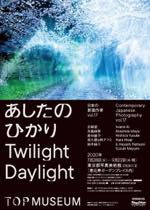 |
 |
| Twilight Daylight: Contemporary Japanese Photography Vol. 17 |
| 28 July - 22 September 2020 |
Tokyo Photographic Art Museum
(Tokyo) |
 |
| Opened against the odds in the midst of the pandemic, this 17th iteration of the museum's annual showcase of up-and-coming photographers featured six artists whose choice of works appeared to respond to the fraught circumstances of the exhibition. Many expressed an acute sense of the here and now or offered a gimlet-eyed scrutiny of the world today, yet with an ultimately positive outlook that felt like a conscious rebuttal to the fear and trepidation assailing us these days. |
|
|

|
 |
 |
|
 |
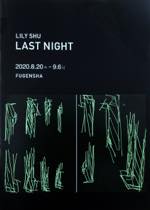 |
 |
| Lily Shu: Last Night |
| 20 August - 6 September 2020 |
Fugensha
(Tokyo) |
 |
| Harbin-born, Japan-based artist Shu has been garnering numerous prizes and concomitant recognition for photographic works that channel and reconfigure the diverse phenomena of advanced capitalist society through her own distinctive filter. This exhibition introduced a new experiment in blending photography with drawing. Apropos of the title, there is something about these images that evokes dreams burgeoning in the dark of night.
|
|
|
|
|
|
|
|

|
 |
 |
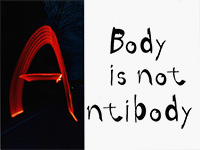 |
 |
| Kota Takeuchi: Body is not Antibody |
| 18 July - 15 August 2020 |
Snow Contemporary
(Tokyo) |
 |
| In 2019 Takeuchi began working as a security guard in the no-go zone around the crippled nuclear plants in Fukushima. Long hours spent waving a traffic-guidance light stick inspired him to create a font by taking time-lapse night photos of himself making light trails of letters of the alphabet. What could be more artistic than to come up with an idea on the job and execute it then and there with the tools at hand? As the title suggests, Takeuchi rejects the notion that one's body should serve as an "antibody" on behalf of the government. Takeuchi describes his body in this context as an "alien," likening it to the mitochondrion, an intracellular organelle that evolved from an interloping bacterium. |
|
|
 |
 |
| Vase to Pray Project 2020 |
| 8 - 22 August 2020 |
Coyama
(Kanagawa) |
 |
| How does one convey the horror of nuclear war? Common methods include exhibits at museums devoted to the atomic bombings of Hiroshima and Nagasaki as well as the firsthand accounts of survivors, yet it remains a subject that artists find challenging to address through their work. The titular project is one attempt to do this. A 3D scan was made of a bottle displayed in the Nagasaki Atomic Bomb Museum that had been melted and deformed by the intense heat of the bomb, and the data was used to create a perfect replica in Hasami ware, a white porcelain made in Nagasaki. This exhibition featured an array of 46 of these bottles, which now serve as vases in which visitors are invited to place an offering of flowers. |
|

|
 |
 |
 |
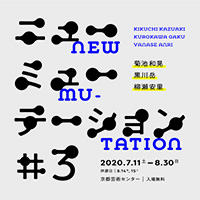 |
 |
New Mutation #3 |
11 July - 30 August 2020 |
Kyoto Art Center
(Kyoto) |
 |
| The third installment of a project focusing on artists who have been active for less than five years introduced three, all in their twenties, whose work centers around the actions of their own bodies: Kazuaki Kikuchi, Gaku Kurokawa, and Anri Yanase. A substantial number of the pieces shown here involved the artist revisiting or referencing events in the history of art by undergoing rather excruciating physical ordeals. |
|
|
 |
 |
 |
| Enrico Isamu Oyama: Spray Like There Is No Tomorrow |
| 11 July - 27 September 2020 |
Fujisawa City Art Space
(Kanagawa) |
 |
| Oyama (b. 1983) is currently based in New York, but went to college in Fujisawa. Here he covered the walls and floor of the gallery in clear plastic sheet and ran a thick, wormlike ventilation duct across the floor, giving the space the ambience of a construction site but utilizing it as his own studio. Spraying paint graffiti-like across the plastic sheeting, Oyama filled the room with his signature black-and-white Quick Turn Structure (QTS) motifs. |
|
|
|
|
|
|
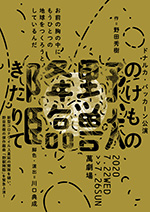 |
 |
| Donalca Packhan: The Advent of the Beast |
| 22 - 26 July 2020 |
Yorozu Gekijo
(Tokyo) |
 |
| Theater companies may dilemmize about what sorts of work to stage in these days of social distancing, but they have the luxury of delving into the dramatic archives, where they are sure to find scripts that speak, for better or worse, to our times. Norishige Kawaguchi's experimental troupe found an excellent vehicle in an early Hideki Noda play, the prizewinning The Advent of the Beast. The pandemic has sadly brought to light, and even intensified, many forms of discrimination in Japanese society, making Noda's examination of contagious disease and discrimination all too pertinent.
|
|
 |
|
|
|
 |
|